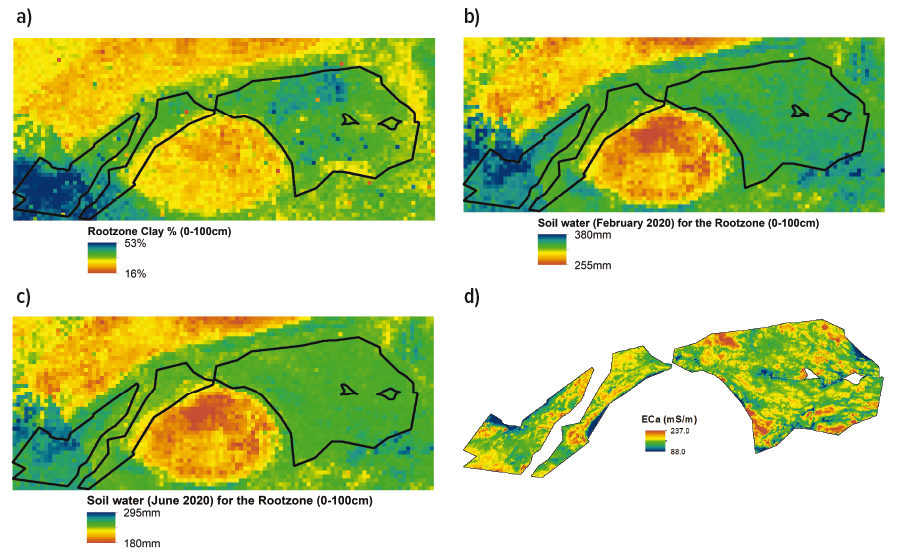Although seasonal forecasts can be fraught with uncertainty, on-farm decisions could be made more certain with improved real-time predictions of stored soil water and how it varies between and within paddocks. This is called ‘nowcasting’ soil water.
Soil water is estimated several ways, including installation of probes, remote sensing and using water balance models, however, each has limitations. Probes cannot be installed everywhere. Remote sensing only measures surface soil moisture. Water balance models need good soil variability representation in terms of water holding capacity and plant water use evapotranspiration estimates. The solution is not to rely on one data source but to leverage the best features of each.
In response, GRDC has partnered with the University of Sydney, CSIRO, University of Queensland, Australian National University and the Bureau of Meteorology (BoM) to invest in SoilWaterNow.
The project extracts the best features of all methods in terms of accuracy and spatial and temporal resolution to provide improved plant available water (PAW) predictions using scaleable, modular modelling frameworks. These could be used to underpin new digital farming/decision aid products developed by commercial third parties.
This approach means next-generation sensors, remote-sensing platforms and water balance models could be incorporated into decision aids. The project will test, develop and refine data-driven, data assimilation, water balance modelling and ensemble-based approaches.
Results for ‘Llara’, the University of Sydney farm near Narrabri are shown in Figure 1. Soil water is estimated by spatially running a water balance model with estimates shown for February and June 2020 (Figure 1b,c), which involves parameterising the water balance equation:
Change in soil water = rainfall – evapotranspiration/runoff/deep drainagechers

Figure 1: A variety of maps showing soil water availability for the University of Sydney’s ‘Llara’ farm (a) Clay content map, (b) Soil water estimate (Feb 2020) (c) Soil water estimate (Jun 2020) (d) Electromagnetic induction survey. Source: University of Sydney
Rainfall can be estimated from BoM weather surfaces or local weather stations, and evapotranspiration can be estimated by remote sensing.
Soil water movement and storage within the profile is estimated by digital soil maps, an example is shown in Figure 1a from the CSIRO-developed Soil and Landscape Grid of Australia.
Figures 1a-1c show what is possible with nationally available and free geospatial datasets where water is predicted at different depths in the soil profile at any point in time for anywhere in Australia. This is what we call a ‘data-poor’ situation.
In the next stages, analytical workflows will be developed to incorporate local on-farm data, in a ‘data-rich’ scenario; for example, when electromagnetic (EM) surveys and soil probes are available, as shown in Figure 1d. This could be used to create an improved digital soil map in the case of the EM maps to characterise water holding capacity better or, in the case of probes, to calibrate the water balance model.
The aim is for growers to have options from data-poor to data-rich.
Growers can use better PAW estimates in many ways, the biggest benefit is to better determine fertiliser rates based on soil water conditions, and rapidly quantify soil moisture profile across paddocks and farms prior to planting
The first series of prototype PAW products are available on an R Shiny platform, where the predictions are at 90 metres for multiple depths in the soil profile based on the data-poor scenario. These are for university farms in northern NSW.
Over the life of the project, we will increase the number of locations where the PAW products are deployed and tested Growers interested in getting involved should contact Thomas Bishop, as should AgTech businesses with an interest in testing products and/or potentially commercialising them.
More information: Professor Tom Bishop, 02 8627 1056, thomas.bishop@sydney.edu.au

























































